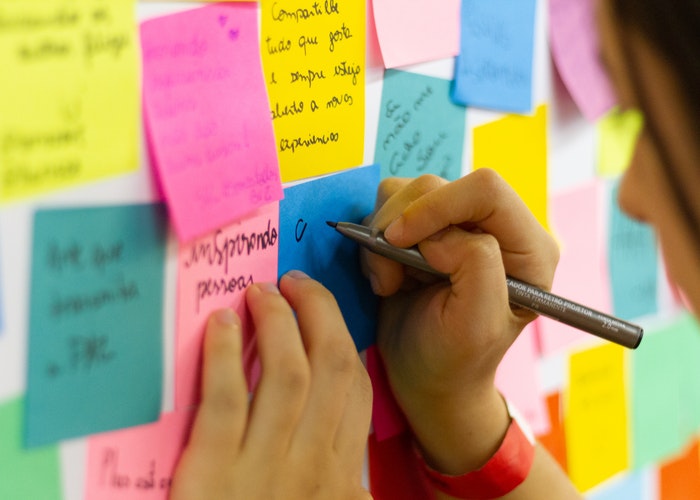How I Paid Off My $16,700 Student Loan In One Year

Last October, I finished paying back my $21,000 ($16,768.50 USD) student loan, just two months after I started my first full-time job. I was 22 years old.
One of my biggest pet peeves in university was people whose parents paid for everything. Whether it was their rent, their phone bill, their tuition, or all of the above, I hated it. I would spend hours searching out and applying for much-needed scholarships, only to find out that John Smith won it and was using the money to fund a “much-needed” getaway to New York City. I would trudge through part-time jobs, taking on extra hours during reading weeks or holidays when other students would be back in their hometowns.
By my final year of university, I was balancing four part-time jobs on top of classes, but that was simply to be able to afford to live. Paying off my student loan didn’t occur to me until I walked off the graduation stage and thought, Now what? Here are seven things that allowed me to pay off my student debt in one year.
1. I bought a self-help book.
Realizing I needed to take control of my life, I unashamedly hit the self-help aisle. I stumbled upon Well-Heeled: A Smart Girl’s Guide to Getting Rich by Lesley-Anne Scorgie, and I immediately thought, I’m a Smart Girl! I want to get rich! Though this book did not lead me to immediate riches, it was packed with gems of advice about how to pay down multiple debts at once and how to manage your money. Lesley-Anne’s style worked well for me because I felt I could relate to this Canadian woman who was so driven on putting herself first. I urge you to take a stroll down the aisle at your local bookstore (or your Kindle catalog) and find the guide that speaks to you best.
2. I created a budget.
You only need to know one equation to make a simple budget:
Revenue – Expenses = Net Income
That seems obvious, but seeing it in front of you on one page and it translates into your paycheck minus your bills/spending equals your potential savings. I call my budget “The Bank of Hailey,” and I keep it on my desktop to open and update daily. It’s a simple Excel spreadsheet composed of many tables and a pastel color scheme that took some trial and error to perfect.
3. I switched banks.
My bank, which I’d used since childhood and that shall remain nameless, sucked. My first step was to find a bank with no banking fees, since I could no longer have a free student account. My roommate at the time told me about (the Canadian bank) Tangerine and the bonus she and I would get if I opened a new account. The main difference between Tangerine and my former bank is that Tangerine is an online bank, and therefore their website was on-point and user-friendly. Everything was easy to navigate, transactions were reflected in real time, and they also post relevant finance articles. You even get to choose a picture and phrase for secure log-in, and it always makes me laugh when I see a photo of a blender standing between me and accessing my life savings.
4. I worked. A lot.
By the end of my undergrad, I had worked eight different jobs, and by the final year, I was balancing four at once. Then I graduated, and the fun thing about being done with school is you have more time to work (the rest of your life in fact). For just under a year, I managed to balance six part-time jobs before finally landing a full-time salaried position.
5. I made sacrifices.
While in school, I lived in the reasonably priced Canadian city of Ottawa in a beautiful three-bedroom apartment in a trendy part of town. My share was a cool $570 ($455.14 USD) inclusive a month. You can imagine my horror when I moved to Toronto after graduation and discovered the shockingly high cost of living. Having come from a beautiful affordable apartment I shared with two lovely ladies, I couldn’t fathom that I was now living in a not-so-nice area, with a random man as a roommate, paying $760 (S606.86 USD) a month plus utilities.
After complaining to one of my coworkers that this grown man I lived with didn’t understand the basics of recycling, she mentioned that a room in her house was available. The location was a decent bit north of the bustling downtown, but for $600 ($479.10) a month, I wouldn’t complain. I moved into this new house in January, but not too long into my renting, I realized this would never be the “home” I was looking for. I had my own room, but I shared the rest of the house with my coworker, one other roommate, my landlord, my landlord’s girlfriend, and their dog.
Because my landlord lived in the house, too, I never felt like I had my own space — I felt like I was a visitor. I knew this situation wasn’t ideal, so I told myself that once I paid off my loan I would move into a place of my own. If you’re looking for motivation to pay down your loan, I’m not saying move into a crowded situation you don’t feel comfortable in — but it definitely helps.
6. I had a frugal social life.
Okay, using the term “social life” may be pushing it. When I moved to Toronto, I knew one person. When you only have one friend, you’re often staying in and watching Netflix. I spent my nights volunteering at the different theatres in Toronto in exchange for a complimentary ticket and a free coffee. Big cities are nice in that you can often find some sort of trendy blog that will have listicles like “Free things to do in your city this week!” Take advantage of those. Get a library card! Library books are free, and the supply is endless. Go for a walk while listening to a good podcast that makes you feel as though you’re chatting with friends. The Guys We F*#!@ed Podcast really got me through that first year.
7. I made a savings goal.
If we look back at the budget equation in #2, the final outcome I got is what money I would transfer at the month’s end from checking to savings. I told myself that once I saved $5,000, I would give $1,000 to my loan. After achieving that, it felt so great to see such a large chunk removed, subsequently keeping my interest for that month at a smaller number than usual. I then told myself that once that $4,000 in savings became $6,000, I would give $1,000 to my loan. Then once that $5,000 became $7,000, and so on. Setting a fun challenge like this made me want to keep saving and paying down my debt.
*****
If you’ve paid off a big debt, what strategies have helped you most?
Hailey is a homebody. Follow her social medias @hailmast.
Image via Unsplash




